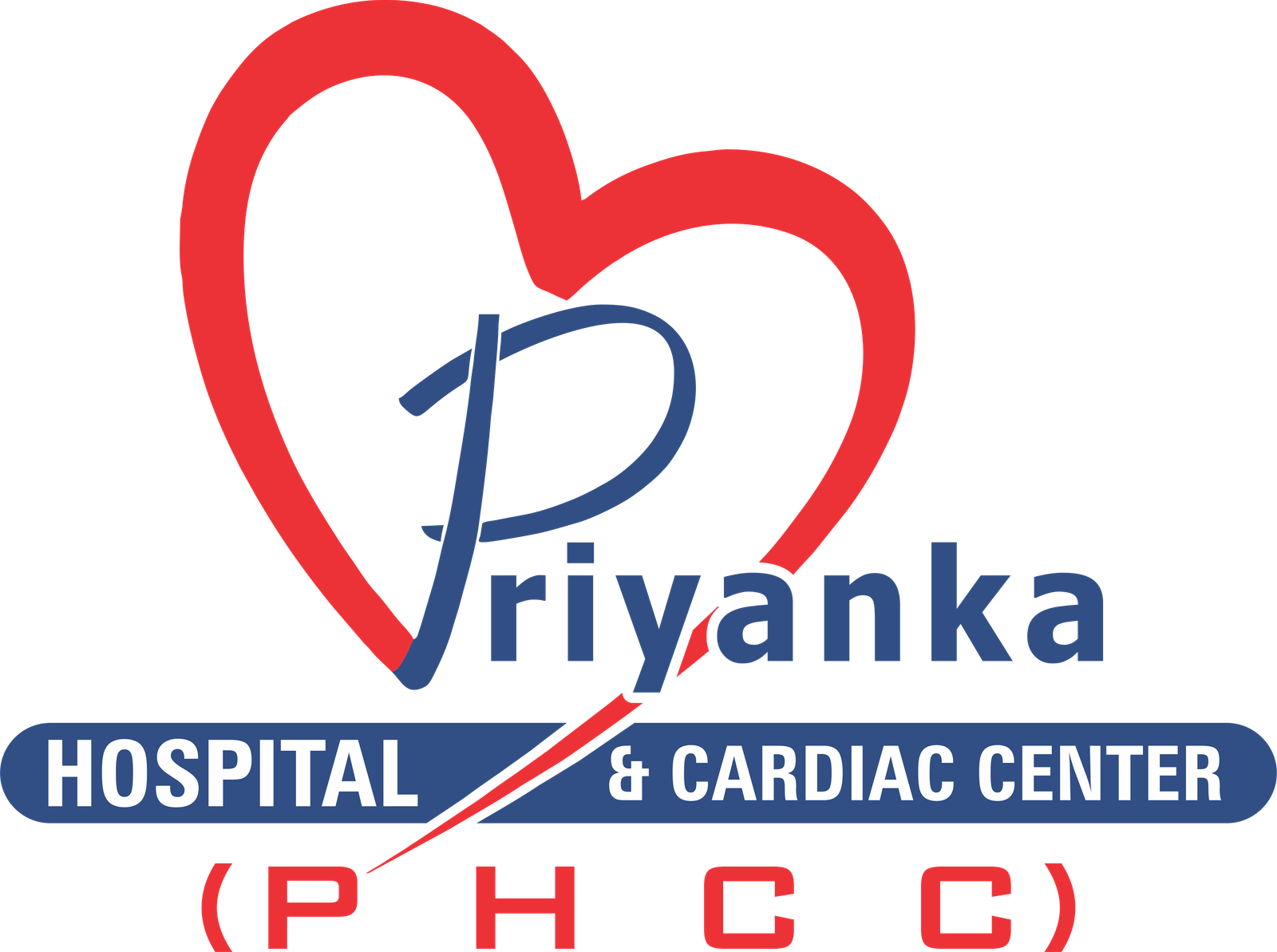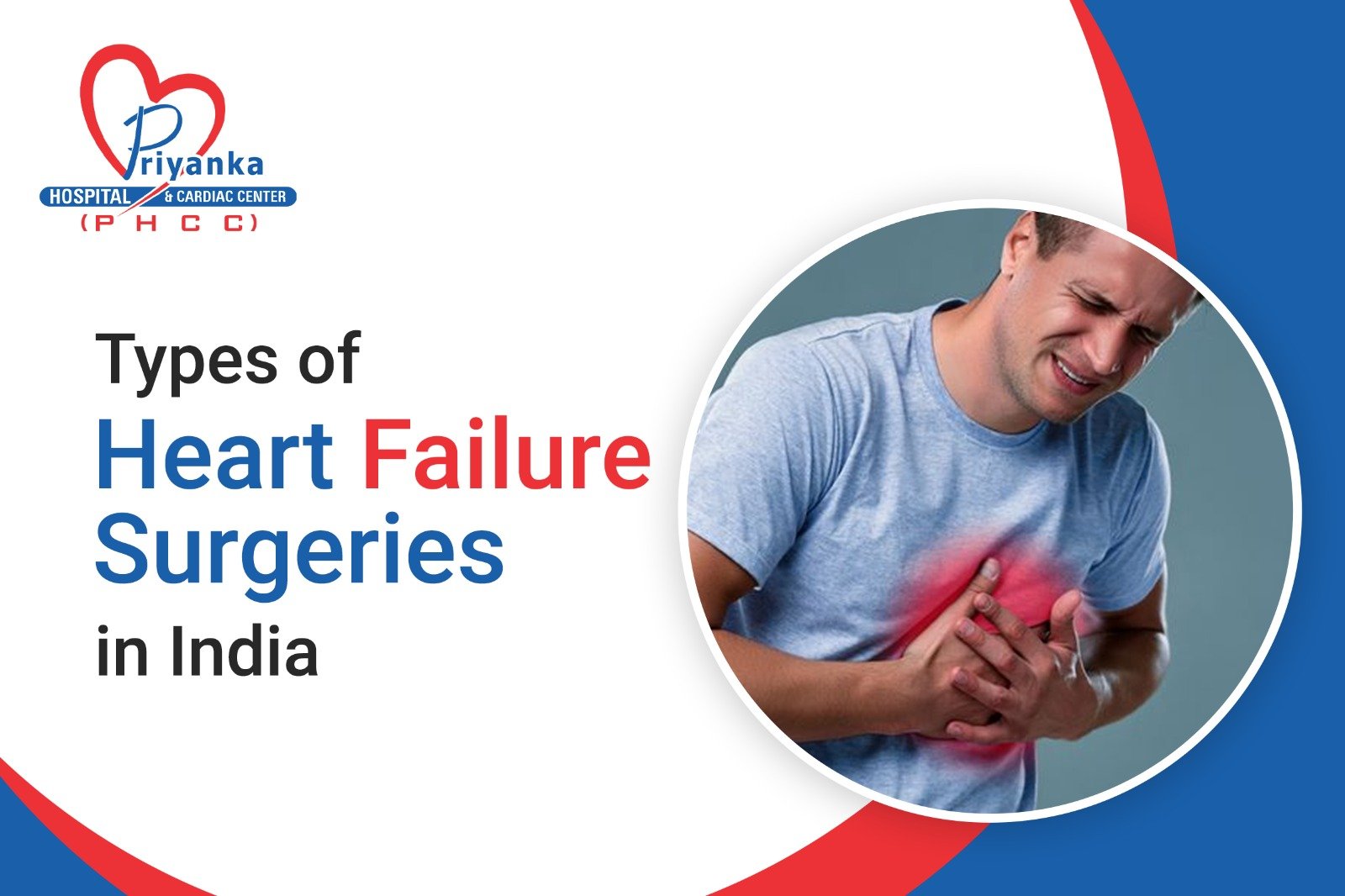Which life-changing surgeries help people with heart failure in India? Let’s explore the advanced surgeries that can help manage this condition. These include implantable cardioverter defibrillators and heart transplants. Priyanka Hospital(PHCC) provides hope for those affected by heart failure.
Understanding Heart Failure
Congestive heart failure, known as heart failure, is when the heart can’t pump enough blood to meet the body’s needs. It happens because the heart’s muscles weaken or stiffen, impacting its chambers. As a result, heart failure can come on slowly from heart issues or suddenly from heart injury.
Symptoms of Heart Failure
The main signs of heart failure are trouble breathing, tiredness, and swollen limbs. Other signs might be an irregular heartbeat and body fluid buildup. If not treated well, these signs can get worse over time.
Causes of Heart Failure
Heart failure has several causes. These include heart disease, high blood pressure, birth defects, and heart infections. Also, certain drugs, substance abuse, and poor lifestyle choices like obesity and smoking can lead to it. These issues can harm the heart’s muscles, affecting blood pumping.
Types of Congestive Cardiac Failure
There are different types of heart failure, like left-sided and right-sided, systolic and diastolic. The type shows which part of the heart is damaged and how that affects pumping. Knowing the heart failure type is vital for the right treatment.
Heart failure is a big health challenge worldwide, affecting about a million people. It demands a complete management strategy, with medicines, lifestyle improvements, and sometimes surgeries. This approach offers the best chance at a good life with heart failure.
Diagnosing Heart Failure
Diagnosing heart failure includes checking the patient’s history and doing exams. Health providers look at the patient’s history and any signs. They then do blood tests, chest X-rays, and echo tests to understand the heart’s health.
Medical History and Physical Examination
Doctors start by talking to the patient and examining them. They ask about symptoms like shortness of breath and look for related health issues. These could be high blood pressure or heart attacks in the past.
Blood Tests
Blood tests check for illnesses that could lead to heart failure. These include kidney and brain function tests. High levels of certain proteins in the blood can cause heart failure.
Chest X-ray
A chest X-ray shows the heart’s shape and lungs for fluids. It helps find out if the patient has heart failure.
Electrocardiogram (ECG or EKG)
An ECG looks at the heart’s electrical activity to find issues. It can indicate a previous heart attack. This helps in heart failure diagnosis.
Echocardiogram
An echo uses sound waves to visualize the heart. It provides details on the heart’s health, including how well it pumps.
An ejection fraction over % means the heart is doing well. A healthy heart function is indicated by an ejection fraction of % or higher, which is considered ideal. The key to choosing the best treatment for heart failure is
Doctors classify heart failure based on the severity of the symptoms. Four classes have severe cases of experiencing shortness of breath even when resting. The seriousness also varies from A to D, with D requiring special care.
A detailed diagnosis is key for the right treatment. Doctors base it on the patient’s history, exams, and various tests. This approach ensures the treatment matches the patient’s needs.
Heart Failure Surgery
Surgeons might advise surgery in serious heart failure cases to boost the heart’s function and well-being. Procedures like the implantable cardioverter defibrillator (ICD), cardiac resynchronization therapy (CRT), and the left ventricular assist device (LVAD) can help.
Implantable Cardioverter Defibrillator (ICD)
Doctors place the implantable cardioverter defibrillator (ICD) under the skin. It keeps an eye on the heart’s rhythm. If it finds a problem, the ICD shocks the heart. This keeps the heart’s beat normal and stops sudden cardiac death in severe heart failure patients.
Cardiac Resynchronization Therapy (CRT)
Cardiac resynchronization therapy (CRT) improves how the heart’s ventricles work together. By making their contractions match, CRT boosts the heart’s efficiency. It also lessens the heart failure symptoms.
Left Ventricular Assist Device (LVAD)
The left ventricular assist device (LVAD) is a pump that helps the heart’s left ventricle. It can be a step before a heart transplant or a solution for those who can’t get one. With a better design, the ‘next generation’ of LVADs first saw broad use in with patients.
Coronary Artery Bypass Grafting (CABG)
CABG surgery reroutes blood around clogged arteries to boost heart blood flow. In India, heart troubles often come from CAD, which makes procedures like CABG vital.
Percutaneous Coronary Intervention (PCI):
Also known as angioplasty, this minimally invasive procedure involves using a balloon to open narrowed or blocked coronary arteries, often followed by the placement of a stent.
Transcatheter Aortic Valve Replacement (TAVR):
A minimally invasive procedure to replace a narrowed aortic valve that fails to open properly (aortic valve stenosis).
Heart Valve Repair or Replacement
Fixing or swapping heart valves can help with heart failure. Faulty valves make heart failure worse or trigger it.
Heart Transplantation
When heart failure gets bad, a heart transplant might be the best chance. It swaps the weak heart for a strong donated one, offering new hope.
Doctors choose these surgeries based on advice from groups like the American College of Cardiology. They look at each patient’s situation carefully and watch their progress closely.
“Personalized recommendations and ongoing monitoring are essential in managing heart failure effectively.”
Conclusion
Heart failure is a serious issue that needs expert care. Surgeries can greatly help, even though they cannot fully fix the problem. They make the heart work better and improve the patient’s life in India. Surgeries like ICDs, CRT, and heart transplants fight the causes of heart failure.
Knowing about surgeries is key. From open-heart to less invasive procedures, they work wonders in India. With a team of experts, patients get top-notch care. This helps them do better against heart failure.
Staying active and eating well is crucial for heart failure, and it is about how surgery mixes with a healthy life in India. This gives patients hope for a brighter future.
FAQ
Q.1 What are the different types of heart failure surgeries available in India?
India offers several heart failure surgeries. These include implantable cardioverter defibrillators (ICDs) and cardiac resynchronization therapy (CRT). Left ventricular assist devices (LVADs) and coronary artery bypass grafting (CABG) are available.
Other surgeries are heart valve repair or replacement and heart transplantation. These procedures are common in treating heart failure in India.
Q.2 What is congestive heart failure, and what are its symptoms?
Congestive heart failure is when the heart can’t pump enough blood. This leads to body tissues not getting the blood they need. Symptoms like shortness of breath and tiredness exist.
Other symptoms include swollen legs and feet, irregular heartbeats, and fluid buildup.
Q.3 What are the common causes of heart failure?
Many things can cause heart failure. These include conditions like coronary artery disease and high blood pressure. Heart defects and infections are also on the list.
Plus, certain drugs, drug abuse, obesity, and smoking can lead to heart failure.
Q.4 What are the different types of congestive cardiac failure?
Several types of heart failure exist. These include left-sided, right-sided, systolic, and diastolic heart failure.
The specific type can affect the treatment and symptoms.
Q.5 How is heart failure diagnosed?
Diagnosing heart failure needs a thorough check-up. Doctors combine physical exams with several tests. These tests include blood, chest X-rays, and electrocardiograms (ECG).
Doctors also use echocardiograms. They help to see how the heart is functioning.
Q.6 What is the role of an implantable cardioverter defibrillator (ICD) in heart failure treatment?
Implantable cardioverter defibrillators (ICDs) are like safety devices for the heart. They keep an eye on the heart’s rhythm. And, if it goes off track, they can give a shock to get it back to normal.
Q.7 What is cardiac resynchronization therapy (CRT), and how does it help heart failure patients?
CRT helps the heart pump better. It makes sure the lower parts of the heart work together. This improves the heart’s overall functioning.
Q.8 What is a left ventricular assist device (LVAD), and how does it help treat heart failure?
LVADs are special pumps that help the heart. They support the left ventricle, the heart’s main pumping chamber. You can use these while waiting for a heart transplant. Or as a long-term solution for severe heart failure.
Q.9 What other surgical procedures do doctors use to treat heart failure?
Surgery to treat heart failure also includes bypassing blocked arteries with CABG. Additionally, it involves fixing or replacing heart valves. And in severe cases, heart transplantation is another option.

